5 Common Fall Pests and How to Prevent Them
5 Common Fall Pests and How to Prevent Them
The cider is heating up, the colored leaves are gently drifting down from the trees, and the pumpkins are once again featured in every home decor post online. That’s right: it’s the first day of fall! While the weather is still questionably warm in many areas, the annual fall chill is slowly making its way through our yards. Many of us welcome this change in the weather, but the cool edge has a completely different meaning for certain critters out in nature. Unfortunately, pests seek out shelter, food, and water in the fall just as much as the rest of the year, if not more so. But why is fall such a major pest-invading season? Let’s dive into the world of autumn pests and why our homes are especially appealing to certain frustrating species.
Why Do Pests Love Our Homes More in the Fall?
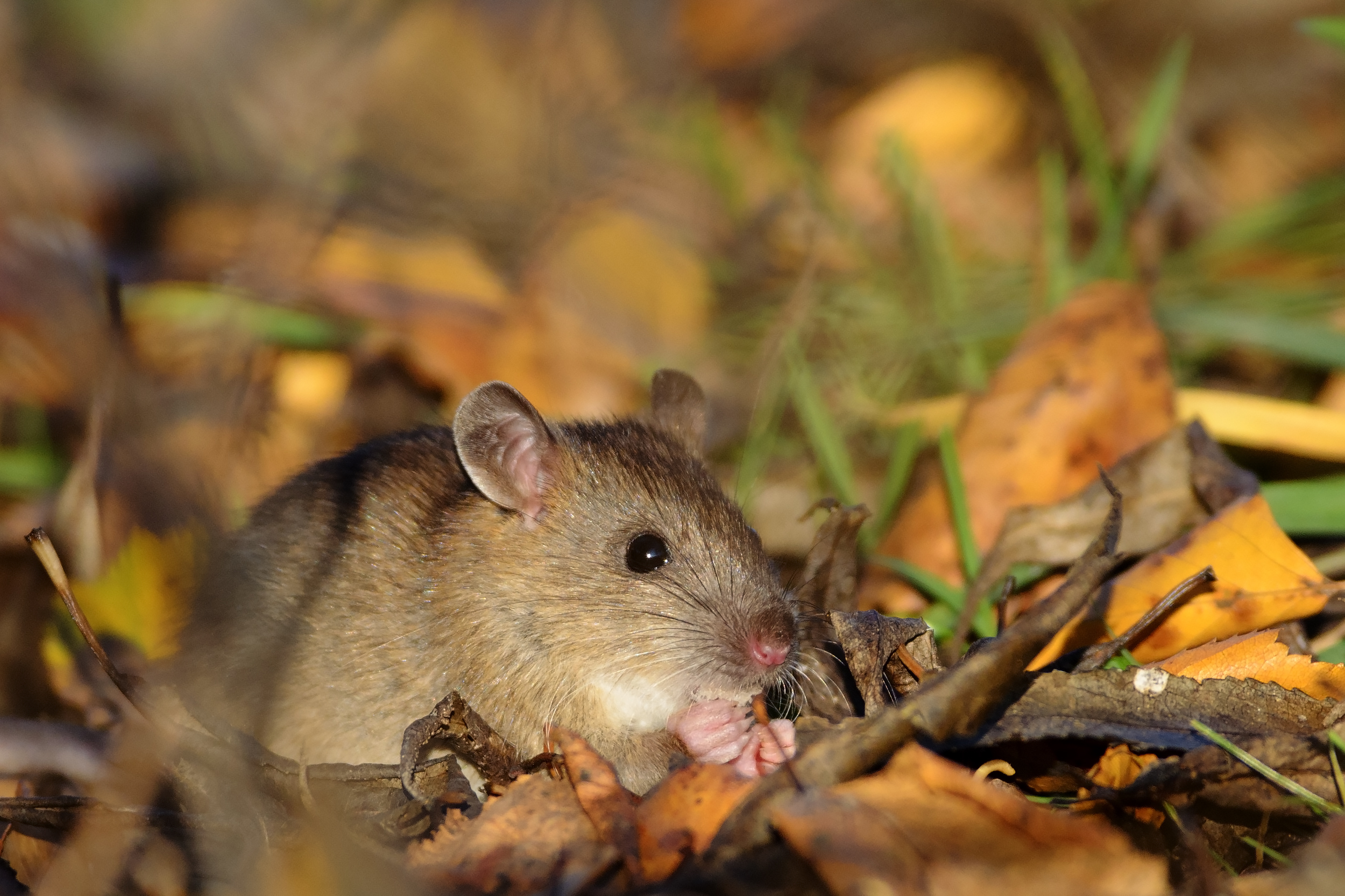
This has been a question plaguing the minds of many homeowners throughout the years. We know that summer is a popular time for insects because they have more energy in hot weather and reproduce quicker, so autumn seems like it should be free of pest issues. While the cooler temperatures do slow down insect activity, they are also one of the main reasons why pests are still a major problem. Most small critters can’t live in colder temperatures, so they seek shelter from the chill. Even though winter is much colder in general, fall is the time that pests start to search for their new home. A related reason why pests are an issue in fall is because the weather starts to be more varied. Many places experience summer storms off and on, but rainfall in the fall is more consistent and comes with cooler temperatures. Insects and rodents seek shelter from adverse weather anyway, so these reasons combined motivate them to find the best shelter possible: our homes.
There are also a couple of varying factors that seem to be more abundant in the fall and winter than in the warmer months. Some of the most popular U.S. holidays are during this time, including Halloween and Thanksgiving, which means more people gathering together and more food being consumed. These are fun activities for us, but they’re even better for pests. There is more trash to explore for their food and water, and there will likely be some crumbs leftover from the latest family meal. Also, if any of the doors are left open for ease of guests going in and out, it has the potential for pests to invite themselves in. And if you travel to see family or go on fun vacations during the fall season, there is the added risk of bringing home bed bugs from some point in the journey.
But no matter the reason for the pest invasions, it is definitely agreed upon that pests are still not enjoyable to deal with in the fall. Any tiny critter found near houses has the potential to invade for the three necessities, but there are some species that seem to make it a habit every year…
Rodents
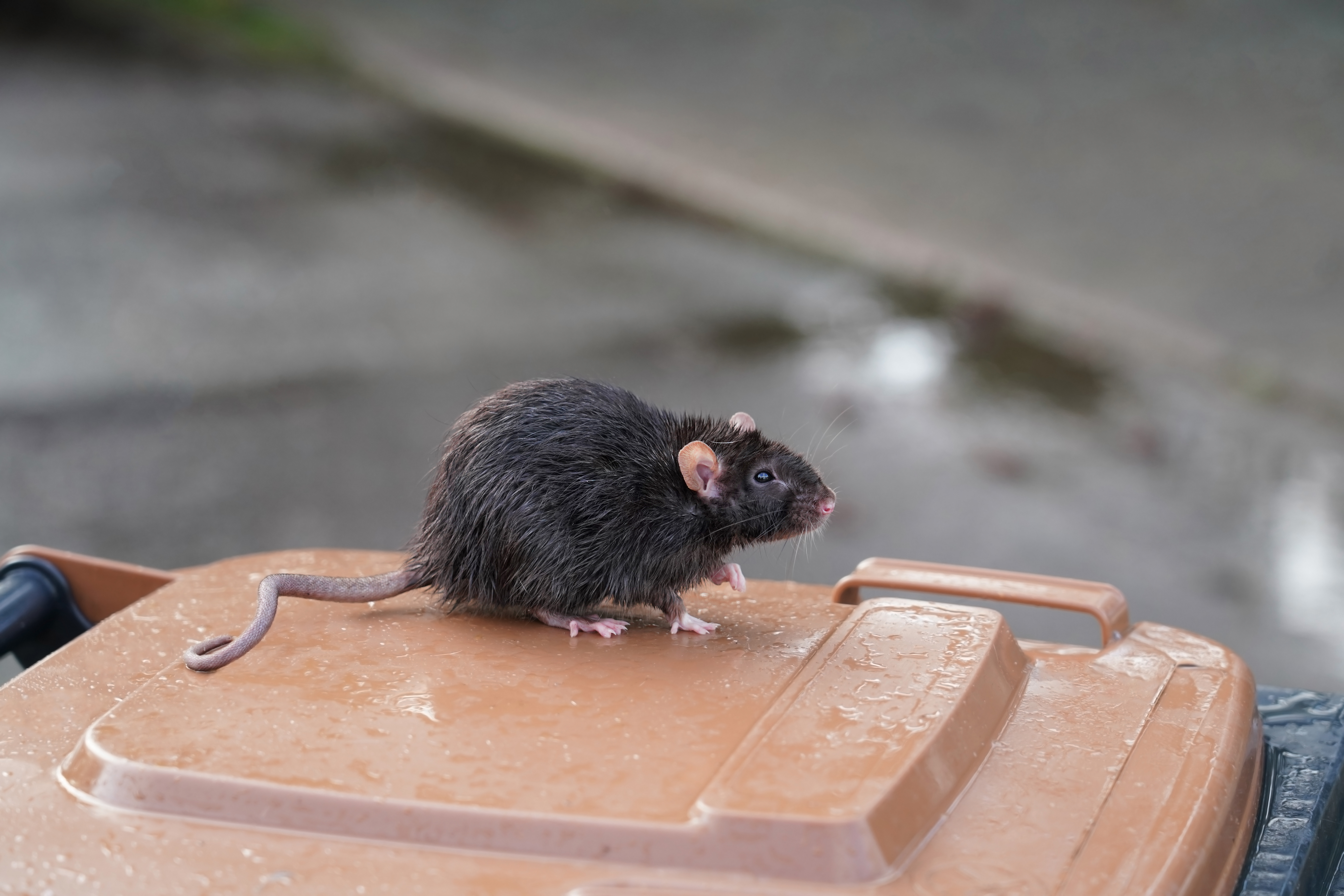
Rodents are a major fall pest in just about every area, especially more rural ones, which could be why the fake versions are featured in many haunted houses. Rats and mice are family-oriented pests, which means they are constantly on the hunt for provisions. The three necessities of food, water, and shelter are all found for rodents in our houses, which is why they like to make their nests literally inside the house. Many nests have been found inside the inner framework of houses, as well as up in attics or near insulation. Since rats and mice will eat all kinds of things, they can survive in the most isolated and tightest of spaces to stay safe in between searching for any kind of garbage they can find.
In addition to the annoyance of having a rodent family living in your home rent-free, there are some definite health risks to this one. Rats and mice both carry all kinds of diseases and harmful pathogens on them, due to their gross living environments and bacteria-filled bodies. They can transmit disease through their fur, paws, droppings, and urine, such as hantavirus. Any food or drink that has been touched by a rodent should be thrown out right away. In addition to these scary facts, rodents also pose an entirely different health risk. They are constantly gnawing to keep their teeth healthy, but this is a huge problem when they turn to the vital features of our homes as a chew toy. Wood damage can accumulate if they’re left for long, and any kind of wiring poses a major fire risk. In fact, many house fires are caused by rats or mice chewing on wiring! If you believe you have a rodent problem, call professional pest control to make sure the issue is completely solved.
Spiders

Spiders are a literal walking contradiction in that they are beneficial creatures with their diet of small insects, but they can become pests themselves if they invade homes and reproduce. Spiders are a fall pest for one main reason: it’s their mating season. In addition to going where there are a lot of insects to eat, spiders are now searching for their true loves. This is why you may see an uptick in the number of spiders crawling around your house. Both sexes of spider have their own purpose in this season, which means that the spot that you find one could potentially tell you if it’s a male or female. Males are actively searching for a mate and venture out to see who they can find, while female spiders stay more stationary and come out from hiding to show that they are available. This may sound nice, but any spider offspring that comes from this season will be a nightmare to deal with.
Most spiders don’t want anything to do with us, which gives us the advantage in eliminating them when we spot one. If you see any spiderwebs in your home, no matter how big or small, dusting them away will aid in cutting down the spider population in the area. It may be a natural insect-catcher, but it is also the home of a spider that chose your house as a vacation home. Also, solving other pest issues in the home will prevent spiders from wanting to invade. They go where the food and other spiders are, so they won’t have a reason to invade, unless they are seeking warm shelter. The only main health risks of spiders is if they bite, when is usually only when they are actually touched or threatened. Most bites will heal just fine, except for two types: the brown recluse and the black widow. Bites from these arachnids contain venom, which can be dangerous to humans and pets if the bite is not treated immediately. Please seek medical attention if someone in your home has been bitten by one of these two, and contact pest control to eliminate the dangerous pests.
Roaches
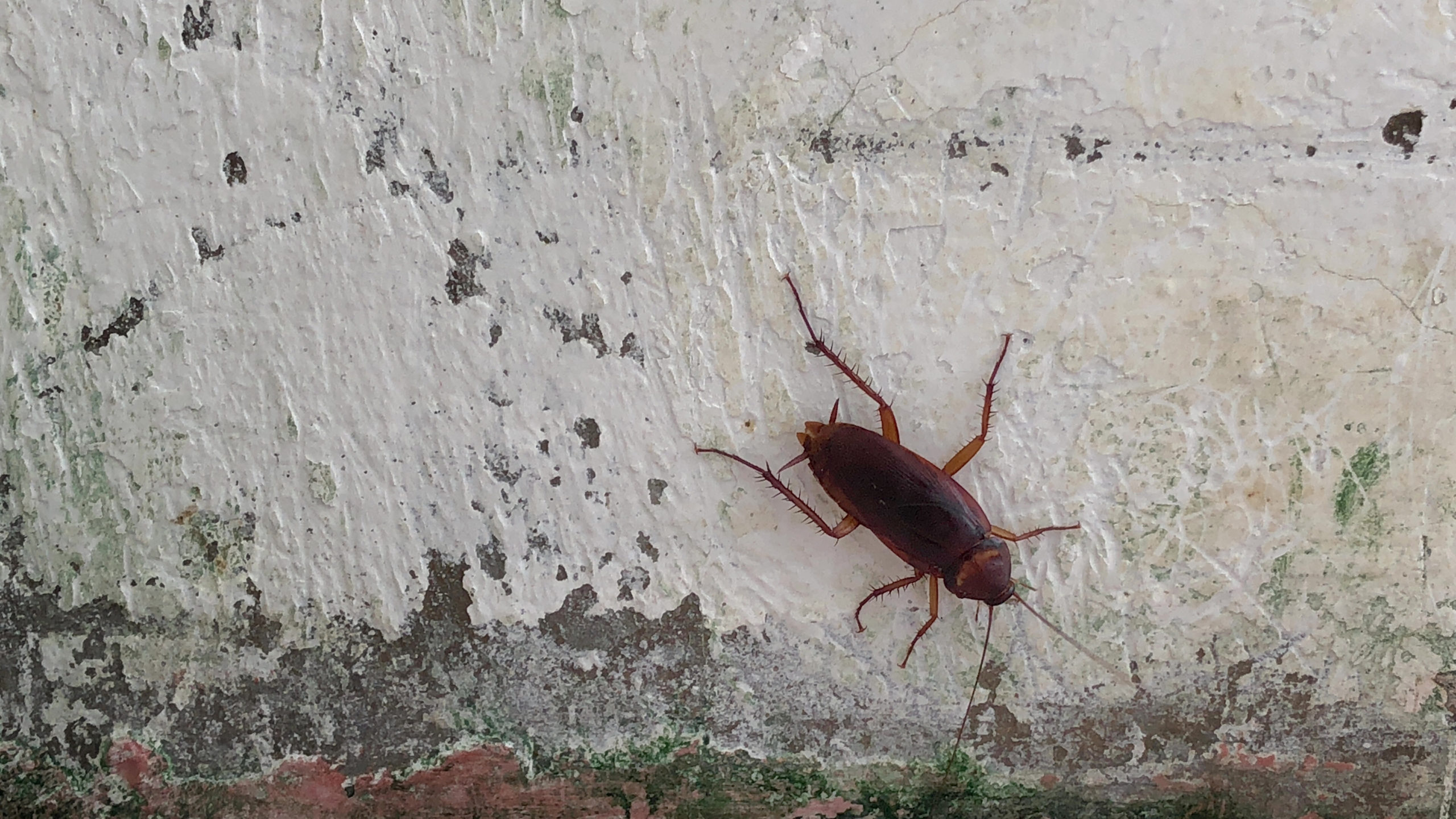
Roaches are similar to rodents in terms of the amount of health risks they carry and how frustrating they are to have. Cockroaches only like to live in dark and damp spaces, especially if they are tighter spots that most critters their size wouldn’t fit in. This is because roaches are positively thigmotactic, meaning they can compress every part of their bodies to fit in the smallest of spaces. While we may not think of our homes as a roach’s dream house, they have a knack for finding the perfect spots to hide and reproduce in. This is usually somewhere with some amount of moisture in the garage, basement, attic, kitchen, or bathroom. There may be a higher moisture level in the fall with increased rainfall, as well as daylight lasting for fewer hours. It doesn’t help that they eat everything, so they can survive off of what we consider to be trash. But while this may sound nice as a natural garbage disposal, it is a huge problem when we consider the sheer amount of health issues that arise from a roach invasion.
Roaches also carry diseases and bacteria on their feet, bodies, and in their waste. Some common ones include salmonellosis, typhoid fever, and cholera. Any food or item that roaches touch is considered to be contaminated. As if that wasn’t enough, roaches can also heighten allergy and asthma symptoms in the people living near the affected area. If you or your family notice a sudden rise in these symptoms, it could be a sign of a roach infestation. Check the hidden areas of your home to make sure there aren’t any pesky roaches, including in cabinets, behind storage in the garage or basement/attic, and around plumbing. Roaches are a hardened pest year-round, but they really become a problem when “dark and damp” can be the descriptor for the general weather.
Brown Marmorated Stink Bugs
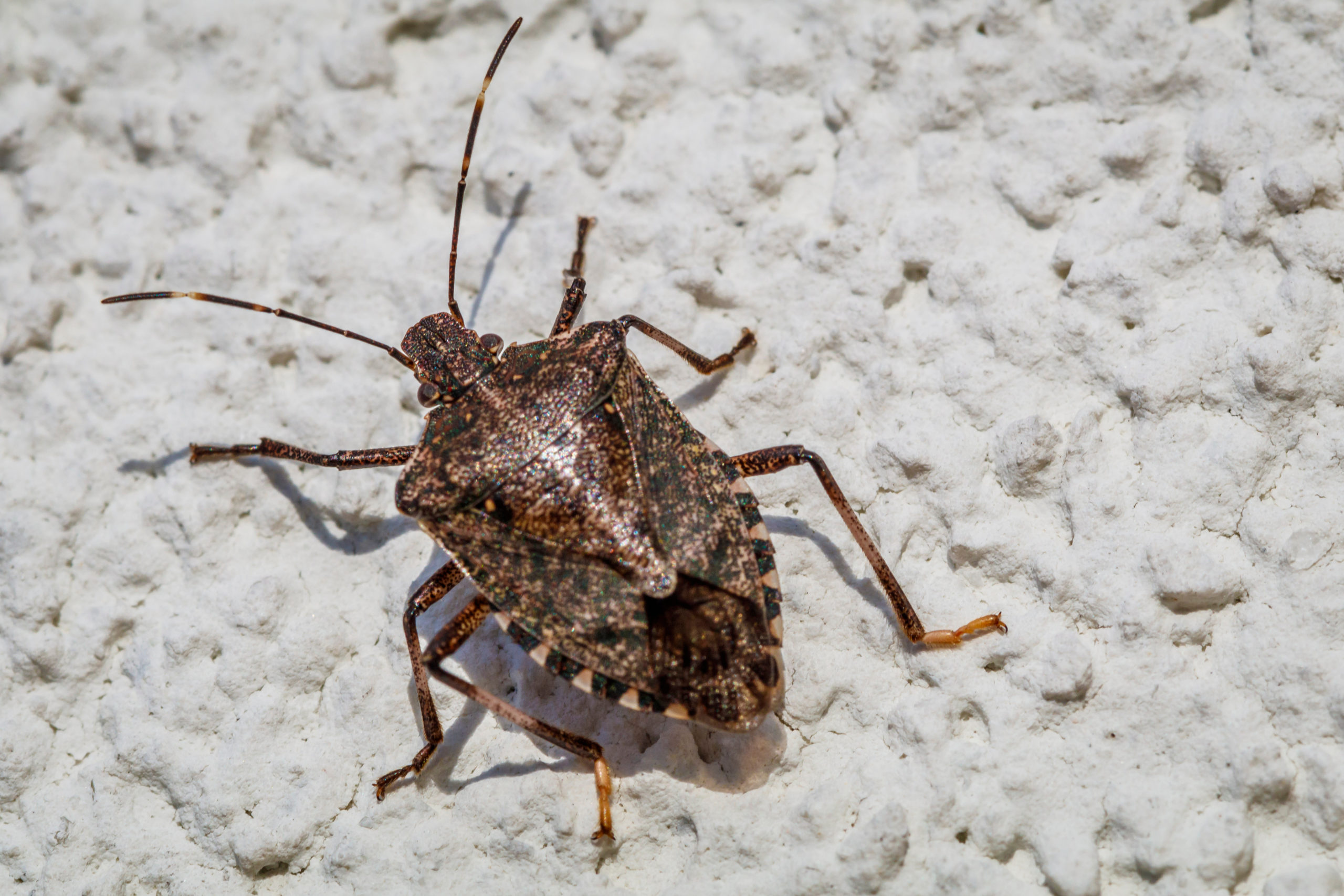
This may seem like a random choice, but these bugs are actually a yearly issue every fall. They definitely prefer to be warm during every season, which is why you may see a strange gathering of them when the sunlight is apparent in the fall. Brown marmorated stink bugs will all gather on the sides of buildings or walls that are actively receiving sunlight, making quite the exterior decor! But besides this odd occurrence, they also have the annual tradition of finding warm shelter that can fit their massive group. This unfortunately means our houses if they are close enough, after a few stink bugs scout out the shelter first to see if it is sufficient. Since these stink bugs can fly and stick to window screens, you may see one or two hanging out on your slider screen on a temperate day. This could be a random occurrence, or it could be some scouts looking for their fall home!
If they do get inside a house, brown marmorated stink bugs like to go into the most secluded places they can find so they can overwinter. The most common spot is behind walls, since you can’t get much more secluded than that. One of the most clear ways to tell if you have a stink bug infestation is, understandably, a strange smell. Their defensive smell is often likened to cilantro, so this pungent smell near walls or cabinets could be the first sign of a pest problem. Other signs include finding dead stink bugs in the house, hearing movement in hidden places, seeing insect waste, and spotting live stink bugs moving in or near the house. These bugs don’t pose any health risks, but that does not mean that the idea of bugs inside the walls is a fun one.
Crickets
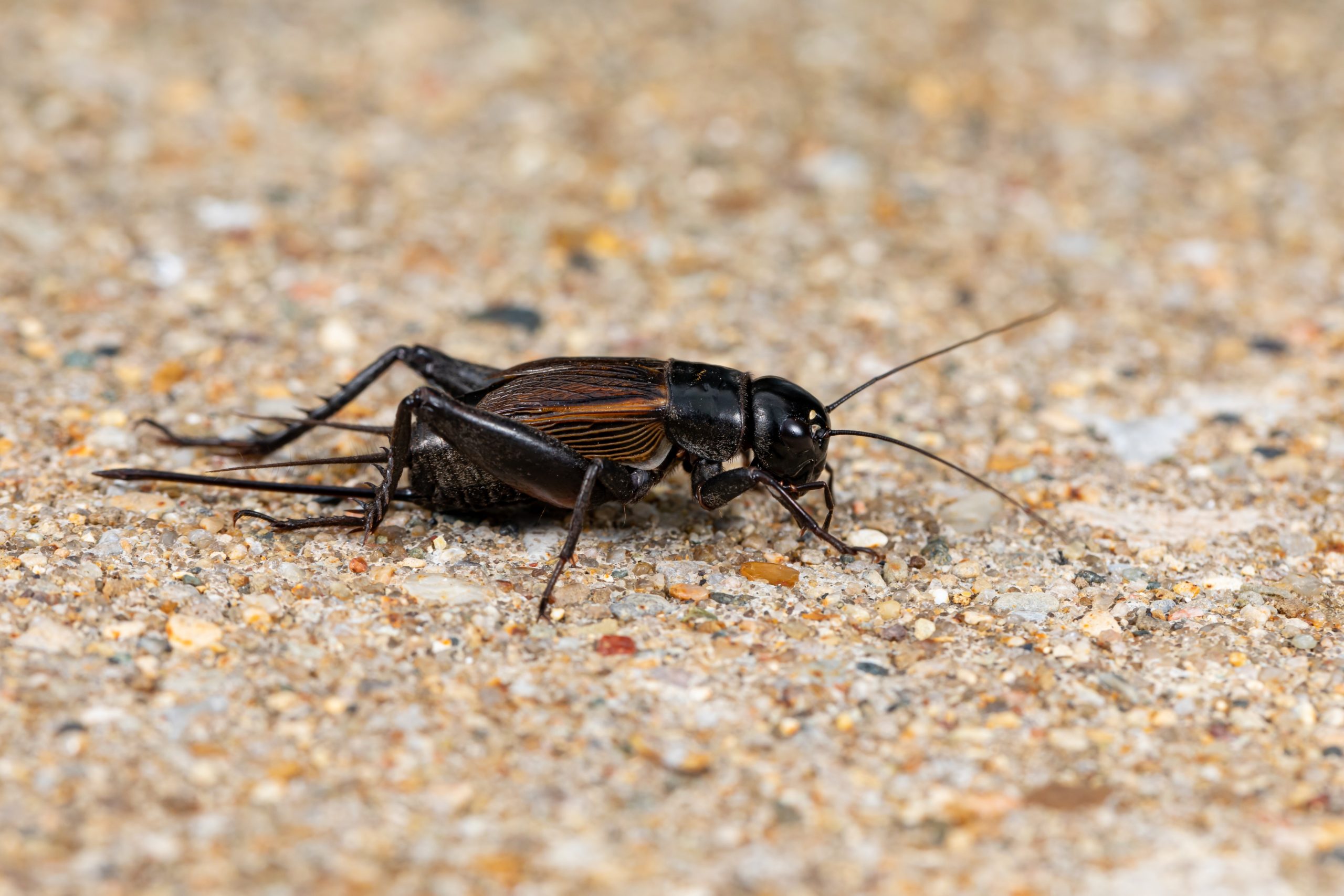
While the chirping of crickets is a nice soundtrack to summer evenings, it turns into an annoying time when they mistake our homes for a personal shelter. Crickets don’t typically want to invade our homes even when the weather cools down, since they prefer to stay out in the fields and meadows in which they can find food and hiding spots. But they do prefer temperate climates, which is why they may be inadvertently drawn to a house that has lights and warmth. They also seek shelter from rain, so a house is the perfect covering for a rainstorm. If your home is anywhere near an open field with tall grass, your house is more at risk for a cricket or two to hop inside than a home in the middle of the city is.
The most common cricket we find in homes is the field cricket, especially in rural houses. These crickets are black or brown with six legs and long antennae. But any cricket lives off of organic material, which involves a number of things. Luckily for us, they like eating smaller insects as a main food source. But the downside is that they also like the organic fabrics in many of our clothes and blankets, which is why they are the reasons behind some of those annoying tiny holes in fabric. Their favorites seem to be cotton, paper, wool, and silk. There are not any inherent health risks from having crickets in the house, but little insects being inside and potentially eating your clothes and papers is not our idea of a fun fall activity.
Don’t be Scared by Pests This Spooky Season!
There are a few ways to prevent pests as much as possible during the fall. One of the largest is to eliminate any source of moisture that they could find. Inspect all sinks and shower areas for any leaks, and get any fixed as soon as possible. Also, check the exterior of your house for any cracks or gaps that pests could get through. There is no crack too small for a pest to fit through, so seal any you find with caulk. Copper mesh and steel wool are great for larger gaps. Try to keep up with yard work as much as possible, especially with cleaning up leaves and mulch. These are favorite hiding spots of many pests, which is not the kind of Halloween scare we enjoy. Finally, as with every season, clean up all crumbs and spills, and keep opened food in airtight containers. Food is possibly the largest common attractor of pests, so eliminating the food source will cut down on the number of pests that find your home very appealing.
Fake spiders and insects make excellent Halloween decorations, but the real deal is a lot scarier for a number of reasons. Just because you may be spending more time indoors or keeping the windows open doesn’t mean that you want a bunch of pests enjoying the season with you. Our team of knowledgable technicians are equipped for this busy season, and we are happy to address all of your pest concerns. Contact us for more information on our eco-friendly products and to learn how our team can keep your home from being the most naturally-decorated house for Halloween.
Citations
Flaherty, E. (2021, September 20). How to manage the most annoying fall pests. Family Handyman. Available at https://www.familyhandyman.com/list/annoying-fall-pests-and-how-to-manage-them/ (Accessed on September 13, 2022).
Hahn, J. & Ascerno, M. (2019). Crickets. University of Minnesota Extension. Available at https://extension.umn.edu/nuisance-insects/crickets (Accessed on September 14, 2022).
Lefton, A. (n.d.). 10 bugs that invade your space every fall. Bob Vila. Available at https://www.bobvila.com/slideshow/10-bugs-that-invade-your-space-every-fall-575835 (Accessed on September 13, 2022).
Most common fall pests (2020, September 21). Maggie’s Farm. Retrieved September 13, 2022, from https://maggiesfarmproducts.com/blogs/bug-help/most-common-fall-pests
Top 10 pest-proofing tips for fall. (n.d.). Pest World. Retrieved September 13, 2022, from https://www.pestworld.org/news-hub/pest-articles/top-10-pest-proofing-tips-for-fall/
8 Creative Ways to Have a Pest-Free Fourth of July
8 Creative Ways to Have a Pest-Free Fourth of July 8 Creative Ways to Have a Pest-Free Fourth of July Summary: The Fourth [...]
A Simple Guide to Preventing Stinging Pests
A Simple Guide to Preventing Stinging Pests A Simple Guide to Preventing Stinging Pests Summary: Stinging insects are more active in warm weather, [...]
These 10 Natural Mosquito Repellents Can Actually Help
These 10 Natural Mosquito Repellents Can Actually Help These 10 Natural Mosquito Repellents Can Actually Help Summary: Natural mosquito repellents are easier to [...]
How to Get Rid of Carpet Beetles
How to Get Rid of Carpet Beetles How to Get Rid of Carpet Beetles Summary: Carpet beetles are sneaky pests that don’t usually [...]
How Do Roaches Affect Asthma and Allergies?
How Do Roaches Affect Asthma and Allergies? How Do Roaches Affect Asthma and Allergies? Summary: It’s no secret that pests impact human health, [...]
These 5 Carnivorous Pests Might Surprise You!
These 5 Carnivorous Pests Might Surprise You! These 5 Carnivorous Pests Might Surprise You! Summary: There are many eco-friendly ways to prevent pests, [...]

